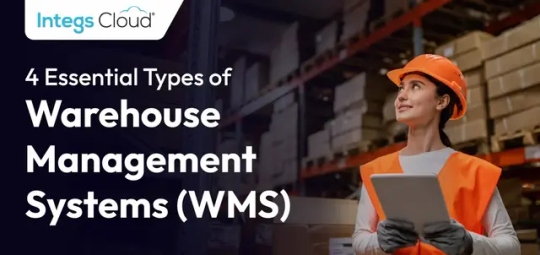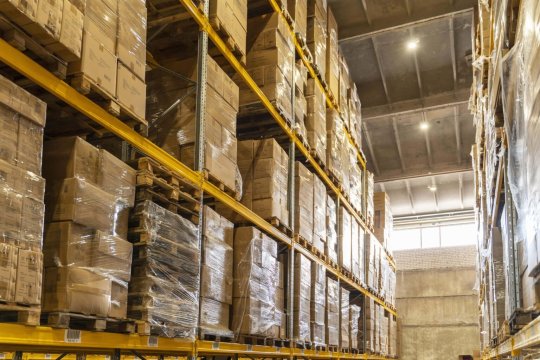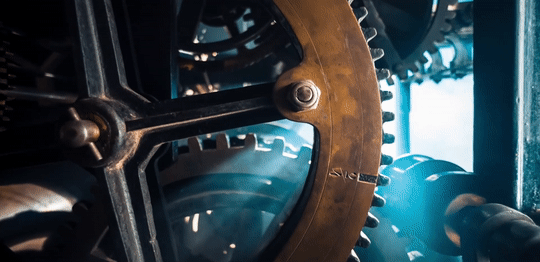#timelab
Photo

Up, Up and Away!
#balloons#hot air balloon#hot air ballon festival#glowing#golden hour#beautiful#nature#desert#timelab#allan deviation#djimavic2pro#to fly#up up and away#pretty sky#sky#glowing sky#fire sky#flying#bitsoflight
34 notes
·
View notes
Photo

A Longines apresenta o novo Ultra-Chron, um relógio para mergulho com movimento de alta frequência inspirado em um modelo de 1968! Com caixa em formato almofada de 43 x 13,6 em aço, resistente à água até 300 metros, é equipado com o novo movimento automático L836.6, com frequência de 36.000 aph (5Hz) e certificado de “Ultra Cronômetro emitido pela Timelab Genebra. 💰 Entre 3.000 e 3.500 Francos Suíços . Longines presents the new Ultra-Chron, a diving watch with a high frequency movement inspired by a 1968 model! With a 43 x 13.6 cushion-shaped steel case, water resistant up to 300 meters, it is equipped with the new L836.6 automatic movement, with a frequency of 36,000 vph (5Hz) and an “Ultra Chronometer” certificate issued by Timelab Geneva. 💰 Between 3,000 and 3,500 Swiss Francs 📷 @longines • • #longines #ultrachron #longinesultrachron #ultrachronometer #divingwatch #divers #sportwatch #timelab #relogioserelogios https://www.instagram.com/p/CeTtUCYOcCt/?igshid=NGJjMDIxMWI=
#longines#ultrachron#longinesultrachron#ultrachronometer#divingwatch#divers#sportwatch#timelab#relogioserelogios
8 notes
·
View notes
Text

One of the 10 views of Okita, a village in the district of Ichinoseki, near to the planned ILC. According to this sign, it is part of the Ichinoseki lively community project. This view is number 2. Am yet to find the others. According to financial reports, it cost 665,000 yen and another 825,000 yen to implement with nine people involved. 15 September 2022. Sony RX100 5A. By Gary McLeod
#ichinoseki#okita#landscapeloading#loadinglandscape#mcleodlabo#timelab#universityoftsukuba#neorural#newtohoku#rephotography#ilc
0 notes
Link
What Difference Does Hr And Payroll Management Software Make In A Business?
Payroll processing is a difficult task for any HR department, especially when managing remote employees. Regardless of the size of your company, several HR operations, including payroll management, are time-consuming and complicated. Furthermore, a minor discrepancy caused by human error can have serious consequences. HR and payroll processes should never be overlooked when it comes to company growth.
0 notes
Text
back into the safety cocoon we go

I didn't even forget to enable timelaps this time, Yippieee! So here's the Timelabs :33
I'm cringing so much looking back at this Idk (even though i just drew this LOL)😭i don't like watching my drawing process TvT
#thiu#nemlei better half#thiu better half#thiu nemlei#art#artwork#better half#digital art#fanart#happy thiu#sad Thiu#better half (game)#thiu (game)#timelapse
100 notes
·
View notes
Photo




Timelab: Hymn to the Great City
567 notes
·
View notes
Photo

When @longines launched their Ultra-Chron Diver in 1968 they introduced it with a high frequency movement. Today the Swiss manufacturer introduces a modern version of the Ultra-Chron Diver with an automatic movement whose balance spring osciliates with 36,000 beats per hour qualifying it as a Timelab certified “ultra chronometer”. This new retro-inspired 300m WR diver offers a 43 mm cushion-shaped steel case. It comes in an impressive box with an extra NATO strap and a tool to change from bracelet to strap if so desired. What do you think about this launch? https://www.instagram.com/p/CeQi5QxMSAg/?igshid=NGJjMDIxMWI=
12 notes
·
View notes
Text
❄️ Vue aérienne de Saint-Pétersbourg en hiver.
🎞: Timelab Pro
1 note
·
View note
Text
Explore 4 Vital Warehouse Management System (WMS) Types - Integs Cloud
The utilization of WMS software is vital for the operational success of a business. However, choosing the appropriate one can be challenging. With various types of warehouse management systems available and multiple alternatives within each category, selecting the right fit necessitates an introspective comprehension of the available options, their distinctions, and identifying the most suitable solution for your organization.

But above all, understanding these options, what makes them different, and why these differences will determine which is the best solution for the nature of your business is important while making a final decision. For 3PL businesses, there exist 4 distinct types of warehouse management systems (WMS). In this blog, we will attempt to understand each one of them in detail!
What Are The 4 Types Of Warehouse Management Systems?
1. Standalone WMS
If you want to purchase standalone systems solely for your warehouse management features and absolutely nothing else, then the standalone WMS is the one for you! Vendors often merge these warehousing systems with current or future solutions, yet market them as specialized products without other supply chain functions.
Although some vendors may provide a few fundamental transportation management tools, the primary focus remains on the best-of-breed WMS approach. Essentially, this involves selective breeding, where only the most crucial and outstanding features from all potential warehouse management system modules are included.
In the different types of warehouse management systems, these typically comprise inventory management and warehouse operations, and users of standalone WMSs can anticipate features such as barcode scanning, cycle counting, slotting, putaway, receiving, picking, packing, and shipping.

2. Supply Chain Modules
When evaluating different WMS systems, it may be helpful to consider them as a subcategory of supply chain management (SCM). SCM software has a wide range of capabilities, from managing vendor relationships to business processes to risk assessment. It emphasizes automating inventory management, material sourcing, and product cycles.
Choosing this type of warehouse management system entails investing in supply chain planning applications that also offer warehousing features. This is quite a popular approach as it allows 3PL businesses to explore the numerous benefits of SCM as well. Combining WMS with other applications promotes cohesion between different aspects of the business and supports holistic management of the entire supply chain.
https://integscloud.com/wp-content/uploads/2023/04/timelab-CfKV0CecnU8-unsplash-min-2048x1089.jpg
3. ERP Integrated
Another well-rounded option from the types of warehouse management systems is ERP solutions. Major 3PL processes including supply chain planning, accounting, procurement, HR, CRM, etc. can be availed via ERP solutions. It can also help upgrade the overall software of an organization.
But, you can’t just blindly opt for any ERP. One excellent choice is Oracle NetSuite ERP which offers WMS solutions that are one step ahead & also provide a centralized system. Incorporating WMS as a supply chain module or integrating it with an ERP system differs from standalone systems as it provides warehouse management as a part of a tool with broader capabilities.
The initial decision to make is whether investing in a specialized WMS or opting for a combined product would be more advantageous. The answer largely depends on the size and objectives of your business.
4. Cloud-based
In terms of maintenance costs and installation, on-premise solutions are often not reliable. You may end up paying significant amounts to handle installation and infrastructure.
In contrast, opting for a cloud-based WMS provides several significant advantages. As these solutions are hosted and maintained by a provider, implementation, and installation costs can be greatly reduced. These scalable solutions are particularly suitable for startups and smaller businesses due to their low cost of entry and subscription-based payment options.
Cloud-based management systems optimize warehouse activities, such as inventory reporting, workflow streamlining through automation, and reducing data entry time. They also ensure timely product updates and real-time data access. Implementing a cloud-based WMS enables you to manage multiple system functionalities from a centralized system.

Conclusion
Based on how you can operate and navigate the types of warehouse management systems, you can decide to choose the best one suited for the nature of your business. For expertise on ERP-based WMS solutions, you don’t need to look further than Integs Cloud Technologies’ expertise!
To know more - https://integscloud.com/blog/types-of-warehouse-management-systems-wms/
#OracleNetSuite#NetSuite#CeligoiPaaS#iPaaS#Integration#Automation#API#SaaS#Enterprise#Tech#Technology#ERP#Software#IntegsCloud#ecommerce#retail#warehouse#warehousemanagement#supplychainmanagement
0 notes
Text
Streamlining Operations with Intelligent Warehouse Management Technology - Technology Org
New Post has been published on https://thedigitalinsider.com/streamlining-operations-with-intelligent-warehouse-management-technology-technology-org/
Streamlining Operations with Intelligent Warehouse Management Technology - Technology Org
Warehouse management technology plays a crucial role in the efficient and effective operation of warehouses. With the increasing complexity of supply chains and the growing demand for faster and more accurate order fulfillment, intelligent warehouse management technology has become essential for businesses to stay competitive in today’s market. This article will provide a comprehensive overview of intelligent warehouse management technology, its benefits, key features, and how it can be used to optimize various aspects of warehouse operations.
A warehouse – illustrative photo. Image credit: Timelab via Unsplash, free license
Benefits of Streamlining Warehouse Operations
Streamlining warehouse operations through the use of intelligent warehouse management technology offers numerous benefits for businesses. Firstly, it increases efficiency and productivity by automating manual processes and optimizing workflows. By automating tasks such as inventory tracking, order picking, and replenishment, businesses can significantly reduce the time and effort required to complete these tasks, resulting in faster turnaround times and increased productivity.
Secondly, intelligent warehouse management technology helps reduce errors and waste. By providing real-time visibility into inventory levels and locations, businesses can minimize stockouts, overstocking, and misplacements. This not only reduces the risk of errors but also eliminates unnecessary costs associated with excess inventory or lost items.
Thirdly, implementing intelligent warehouse management technology improves customer satisfaction. With accurate inventory information and faster order processing times, businesses can ensure that customers receive their orders on time and in full. This leads to higher customer satisfaction levels and increased customer loyalty.
Lastly, streamlining warehouse operations with intelligent technology can result in significant cost savings. By optimizing workflows, reducing errors and waste, and improving productivity, businesses can lower operational costs and achieve a higher return on investment.
How Intelligent Warehouse Management Technology Works
Intelligent warehouse management technology utilizes a combination of hardware and software solutions to automate and optimize various aspects of warehouse operations. The hardware component includes devices such as barcode scanners, RFID readers, mobile computers, and sensors that capture data in real-time. The software component consists of a centralized management system that processes and analyzes the data collected from the hardware devices.
Intelligent warehouse management technology integrates with other systems such as enterprise resource planning (ERP) systems, transportation management systems (TMS), and customer relationship management (CRM) systems. This integration allows for seamless data exchange and synchronization between different systems, enabling businesses to have a holistic view of their supply chain operations.
Furthermore, intelligent warehouse management technology can be customized to fit specific warehouse needs. Businesses can configure the system to match their unique workflows, processes, and requirements. This customization ensures that the technology aligns with the existing infrastructure and operations of the warehouse, maximizing its effectiveness and efficiency.
Key Features of Intelligent Warehouse Management Technology
Intelligent warehouse management technology offers several key features that enhance warehouse operations. Firstly, it provides automated inventory tracking, allowing businesses to have real-time visibility into their inventory levels, locations, and movements. This eliminates the need for manual inventory counts and reduces the risk of stockouts or overstocking.
Secondly, intelligent warehouse management technology enables real-time data analysis. By collecting and analyzing data in real-time, businesses can gain valuable insights into their operations, identify bottlenecks or inefficiencies, and make data-driven decisions to optimize their processes.
Thirdly, intelligent warehouse management technology incorporates predictive analytics capabilities. By analyzing historical data and patterns, the system can predict future demand, identify potential issues or risks, and recommend proactive measures to mitigate them. This helps businesses optimize their inventory levels, reduce stockouts or excess inventory, and improve overall supply chain performance.
Additionally, intelligent warehouse management technology offers mobile accessibility. Warehouse staff can access the system through mobile devices such as smartphones or tablets, allowing them to perform tasks on the go and have real-time access to critical information. This improves operational efficiency and enables faster decision-making.
Lastly, intelligent warehouse management technology provides customizable reporting capabilities. Businesses can generate customized reports based on their specific requirements and KPIs. These reports provide insights into key metrics such as inventory accuracy, order fulfillment rates, and labor productivity, enabling businesses to monitor their performance and identify areas for improvement.
Real-time Inventory Management with Intelligent Warehouse Management Technology
Real-time inventory management is a critical aspect of warehouse operations, and intelligent warehouse management technology plays a crucial role in achieving this. By utilizing real-time data capture devices such as barcode scanners or RFID readers, businesses can track inventory movements and updates in real-time.
Real-time inventory management offers several benefits for businesses. Firstly, it improves inventory accuracy by eliminating manual data entry errors and providing real-time visibility into inventory levels and locations. This reduces the risk of stockouts or overstocking and ensures that businesses have the right products available at the right time.
Secondly, real-time inventory management enables businesses to optimize their order fulfillment processes. With accurate and up-to-date inventory information, businesses can quickly identify available stock for customer orders, allocate inventory efficiently, and fulfill orders faster. This leads to improved customer satisfaction and increased order fulfillment rates.
Real-time inventory management can be used in various industries. For example, in the retail industry, real-time inventory management allows businesses to have accurate stock levels across multiple sales channels, such as brick-and-mortar stores and e-commerce platforms. This ensures that customers can purchase products online with confidence, knowing that the items are in stock and will be delivered on time.
In the healthcare industry, real-time inventory management is crucial for managing medical supplies and equipment. By tracking inventory levels in real-time, healthcare facilities can ensure that they have sufficient stock of critical items such as medications or surgical instruments. This helps prevent stockouts during emergencies or high-demand periods.
Optimizing Warehouse Layout and Space Utilization
Intelligent warehouse management technology can also optimize warehouse layout and space utilization. By analyzing data on product dimensions, demand patterns, and storage requirements, the system can recommend the most efficient layout and storage configurations.
Optimizing warehouse layout and space utilization offers several benefits for businesses. Firstly, it maximizes storage capacity by utilizing the available space more efficiently. By optimizing the placement of products and utilizing vertical space, businesses can increase their storage capacity without the need for additional warehouse space.
Secondly, optimizing warehouse layout and space utilization improves operational efficiency. By reducing travel distances and minimizing congestion, businesses can streamline their workflows and reduce the time and effort required to complete tasks such as order picking or replenishment. This leads to faster turnaround times and increased productivity.
Optimizing warehouse layout and space utilization can be applied in various industries. For example, in the e-commerce industry, where warehouses often handle a large number of SKUs, optimizing warehouse layout and space utilization is crucial for efficient order fulfillment. By organizing products based on demand patterns and optimizing storage configurations, businesses can minimize travel distances and improve order picking efficiency.
In the manufacturing industry, optimizing warehouse layout and space utilization is essential for managing raw materials, work-in-progress inventory, and finished goods. By analyzing production schedules, demand forecasts, and storage requirements, businesses can optimize the placement of materials or products within the warehouse, ensuring that they are easily accessible when needed.
Enhancing Order Fulfillment with Intelligent Warehouse Management Technology
Intelligent warehouse management technology can enhance order fulfillment processes by providing real-time visibility into inventory levels, optimizing order picking workflows, and improving accuracy.
Firstly, by providing real-time visibility into inventory levels and locations, intelligent warehouse management technology enables businesses to quickly identify available stock for customer orders. This eliminates the need for manual checks or physical counts, reducing the time required to allocate inventory for orders.
Secondly, intelligent warehouse management technology optimizes order picking workflows by recommending the most efficient routes and sequences for picking tasks. By analyzing factors such as product locations, order priorities, and picker availability, the system can generate optimized picking lists or routes, minimizing travel distances and reducing the time required to complete picking tasks.
Enhancing order fulfillment with intelligent warehouse management technology offers several benefits for businesses. Firstly, it improves order accuracy by reducing the risk of picking errors. By providing real-time visibility into inventory locations and using barcode scanning or RFID technology to verify picks, businesses can ensure that the right products are picked for each order, reducing the risk of shipping incorrect items.
Secondly, enhancing order fulfillment improves order cycle times. By optimizing order picking workflows and reducing the time required to allocate inventory and complete picking tasks, businesses can fulfill orders faster. This leads to improved customer satisfaction and increased order fulfillment rates.
Enhancing order fulfillment with intelligent warehouse management technology can be applied in various industries. For example, in the food and beverage industry, where products have limited shelf life, enhancing order fulfillment is crucial for ensuring that customers receive fresh products. By optimizing picking workflows and reducing order cycle times, businesses can minimize the time between order placement and delivery, ensuring that customers receive their products in the shortest possible time.
In the fashion industry, where seasonal trends and fast-changing styles require quick turnaround times, enhancing order fulfillment is essential for meeting customer demands. By optimizing picking workflows and improving order accuracy, businesses can ensure that customers receive the right products on time, increasing customer satisfaction and loyalty.
Improving Supply Chain Visibility with Intelligent Warehouse Management Technology
Intelligent warehouse management technology improves supply chain visibility by providing real-time data on inventory levels, movements, and locations. This visibility enables businesses to have a holistic view of their supply chain operations and make informed decisions based on accurate and up-to-date information.
Improving supply chain visibility offers several benefits for businesses. Firstly, it enables better demand planning and forecasting. By analyzing historical data and patterns, businesses can identify demand trends, seasonality factors, or other factors that may impact demand. This helps businesses optimize their inventory levels, reduce stockouts or excess inventory, and improve overall supply chain performance.
Secondly, improving supply chain visibility allows businesses to identify bottlenecks or inefficiencies in their supply chain processes. By analyzing data on lead times, order fulfillment rates, or transportation costs, businesses can identify areas for improvement and implement corrective measures. This leads to improved operational efficiency and cost savings.
Improving supply chain visibility with intelligent warehouse management technology can be applied in various industries. For example, in the automotive industry, where complex supply chains involve multiple suppliers and manufacturing facilities, improving supply chain visibility is crucial for managing inventory levels and ensuring timely delivery of components. By having real-time visibility into inventory levels and movements, businesses can proactively manage their supply chain and minimize the risk of production delays or stockouts.
In the pharmaceutical industry, where strict regulations and quality control requirements apply, improving supply chain visibility is essential for ensuring product integrity and traceability. By tracking the movement of pharmaceutical products from manufacturing facilities to distribution centers and pharmacies, businesses can ensure that products are stored and transported under the required conditions, reducing the risk of product spoilage or counterfeiting.
Reducing Labor Costs with Intelligent Warehouse Management Technology
Intelligent warehouse management technology can significantly reduce labor costs by automating manual processes, optimizing workflows, and improving labor productivity.
Firstly, by automating tasks such as inventory tracking, order picking, and replenishment, businesses can reduce the time and effort required to complete these tasks. This eliminates the need for manual data entry or physical counts, freeing up labor resources for more value-added activities.
Secondly, intelligent warehouse management technology optimizes workflows by recommending the most efficient routes and sequences for picking tasks. By minimizing travel distances and reducing congestion, businesses can streamline their operations and reduce the time required to complete tasks.
Reducing labor costs with intelligent warehouse management technology offers several benefits for businesses. Firstly, it lowers operational costs by reducing the number of labor hours required to complete tasks. By automating manual processes and optimizing workflows, businesses can achieve higher labor productivity and reduce labor-related expenses.
Secondly, reducing labor costs improves operational efficiency. By eliminating manual data entry errors and optimizing workflows, businesses can minimize the risk of errors or delays, resulting in faster turnaround times and increased productivity.
Reducing labor costs with intelligent warehouse management technology can be applied in various industries. For example, in the logistics industry, where labor costs account for a significant portion of operational expenses, reducing labor costs is crucial for maintaining profitability. By automating tasks such as order picking or inventory tracking, businesses can achieve higher labor productivity and reduce labor-related expenses.
In the retail industry, where high-volume order fulfillment is required, reducing labor costs is essential for meeting customer demands while maintaining profitability. By optimizing order picking workflows and reducing the time required to complete picking tasks, businesses can achieve higher labor productivity and reduce labor-related expenses.
Integrating Intelligent Warehouse Management Technology with Other Systems
Integrating intelligent warehouse management technology with other systems such as ERP, TMS, or CRM offers several benefits for businesses.
Firstly, integration enables seamless data exchange and synchronization between different systems. This eliminates the need for manual data entry or data duplication, reducing the risk of errors and ensuring data consistency across different systems.
Secondly, integration provides a holistic view of supply chain operations. By consolidating data from different systems into a centralized management system, businesses can have real-time visibility into their entire supply chain, enabling better decision-making and improved operational efficiency.
Integrating intelligent warehouse management technology with other systems can be applied in various industries. For example, in the manufacturing industry, where ERP systems are used to manage production schedules and inventory levels, integrating intelligent warehouse management technology with ERP systems allows for real-time inventory updates and optimized order fulfillment processes.
In the transportation industry, where TMS is used to manage transportation routes and schedules, integrating intelligent warehouse management technology with TMS allows for real-time visibility into inventory levels and locations, enabling better coordination between warehouses and transportation providers.
The Future of Warehouse Management with Intelligent Technology
In conclusion, intelligent warehouse management technology plays a crucial role in streamlining warehouse operations and optimizing supply chain performance. By automating manual processes, providing real-time visibility into inventory levels, optimizing workflows, and integrating with other systems, businesses can achieve higher efficiency, reduce errors and waste, improve customer satisfaction, and achieve significant cost savings.
The future of warehouse management lies in the continued advancement of intelligent technology. With the increasing complexity of supply chains and the growing demand for faster and more accurate order fulfillment, businesses need to embrace intelligent warehouse management technology to stay competitive in today’s market.
As technology continues to evolve, we can expect to see further advancements in areas such as artificial intelligence, machine learning, and robotics. These advancements will further enhance the capabilities of intelligent warehouse management technology, enabling businesses to achieve even higher levels of efficiency, accuracy, and productivity.
In conclusion, businesses should consider implementing intelligent warehouse management technology to optimize their warehouse operations and stay ahead of the competition. By embracing intelligent technology, businesses can achieve higher efficiency, reduce errors and waste, improve customer satisfaction, and achieve significant cost savings. The future of warehouse management lies in the continued advancement of intelligent technology, and businesses that embrace this technology will be well-positioned for success in the evolving market.
#Accessibility#Analysis#Analytics#Article#artificial#Artificial Intelligence#automotive#automotive industry#Capture#Commerce#complexity#comprehensive#computers#cost savings#crm#customer relationship management#data#data analysis#Data Capture#data-driven#data-driven decisions#devices#dimensions#E-Commerce#efficiency#enterprise#enterprise resource planning#equipment#erp#Facilities
0 notes
Video
Five Elements of Mauritania from Timelab Pro on Vimeo.
For licensing and collabs: [email protected]
Shot on DJI Inspire 3 in 8K 50FPS Prores RAW
We traveled to Mauritania in search of stunning landscapes and beautiful colors, but what we discovered there was something absolutely magical.
Mauritania revealed itself to us like a symphony of nature's elements. When we experienced the raw power of the earth, the gentle touch of the wind, the captivating dance of fire, and soothing embrace of water, it felt like there was an invisible force, a fifth element, giving meaning to everything that surrounded us.
Among the calm sand dunes, we met people who found their peace amidst the shifting sands, while others, along the shore, were braving the ocean. And in between, the wondrous Eye of the Sahara stood as a silent witness. Like a celestial watching over the ever-changing life amid the timeless dunes, quietly keeping the secrets of the past.
Immersed in the nature of Mauritania, we felt wonder and connection to the timeless history.
Author of the project: Andrew Efimov
Drone pilot: Artem Chirukhin
Drone operator: Andrew Efimov
Ground Camera: Vitaly Karpovich
CG: Anton Volkov, Jeen Maestro, Aleksey Pershin
Colorist: Vitaly Karpovich
Edit: Andrew Efimov
Music: MelodySheep
Mix & sound-design: Artem Zinovyev
Recording artist: Julio Cuspinera
Design, SMM: Aleksa Geletey
Producer: Anastasia Mikhailova, Andrew Efimov
Our magic LUTs & Presets for color grading: luts.timelab.pro/
1 note
·
View note
Text
Superbe Timelab avec un Mavic 3 Cine
Superbe Timelab avec un Mavic 3 Cine
Superbe Timelab avec un Mavic 3 Cine
C’est certainement la meilleure timelab, la meilleure vidéo avec un mavic 3 ciné pour cette année.
Le Comptoir de Toamasina, vous propose de découvrir la superbe timelab avec un mavic 3 cine. Le drone que Le Comptoir de Toamasina va acheter pour recommencer l’aventure de notre chaine youtube.
Mais qu’est-ce que le groupe de cinéaste Timelab pro ? C’est un…
View On WordPress
0 notes
Text

A JA (Japan Agriculture) building close to the east side of Ichinoseki Shinkansen station. 16 September 2022. Sony RX100 5A. By Gary McLeod. Previously seen here
#ichinoseki#landscapeloading#loadinglandscape#mcleodlabo#timelab#universityoftsukuba#neorural#newtohoku#cityscape#nightlife#ilc#rephotography
0 notes
Link
The HR department is responsible for the management of overall business operations. Several administrative and employee-related tasks are managed by the HR department. It is responsible for the hiring, recruitment, employment training attendance leave management and payroll processing tasks.
0 notes
Text
Indonesia. Volcanoes and Rainforests FPV exploration
Indonesia. Volcanoes and Rainforests FPV exploration
[email protected] – for licensing and collabs
Timelab official NFT collection: timelab.pro/NFT – collect a part of this artwork
You can finally buy our LUTs! timelab.pro/LUTS
instagram.com/timelabpro/
Subscribe to our Instagram, so you can be the first to see the previews of our upcoming videos, see our day-to-day work process and ask us questions during our weekly Q&A sessions
You can stream the…
View On WordPress
0 notes
Photo





Timelab: Hymn to the Great City
233 notes
·
View notes